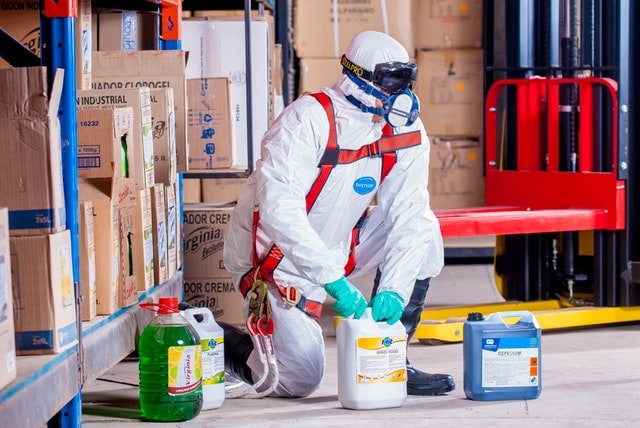Most people with hearing loss in Tucson can blame aging or noise exposure for their condition. While these are the two most common factors that contribute to hearing impairment, they aren’t the only ones. Did you know there is a link between certain chemicals and hearing loss?
The Dangers of Ototoxicants
The Occupational Safety and Health Administration (OSHA) published a Safety and Health Information Bulletin last year advising that exposure to certain chemicals may cause hearing loss and balance problems. These chemicals, known as ototoxicants, are found in products such as solvents, pesticides and pharmaceuticals – and they can interfere with how the ears work.
Ototoxicants are often encountered on jobsites such as construction zones, manufacturing facilities and farms. They are even found in many homes. These chemicals can travel through the bloodstream to the inner ear and cause damage to the hair cells of the cochlea, as well as the neural pathways. When combined with dangerous noise levels – often found in these types of work environments – the risk of hearing loss, either temporary or permanent depending on the extent of exposure, is even higher.
OSHA has placed these chemicals into six categories: solvents, pharmaceuticals, nitriles, asphyxiants, compounds and metals. Industries with the greatest likelihood of using these chemicals include agriculture, construction, mining and utilities. In the manufacturing industry, factory workers dealing with metal, textile and paint are especially vulnerable, as are those who build ships and boats. A type of hearing loss called speech dysfunction is particularly dangerous to these individuals, rendering them unable to distinguish warning signals and voices from ambient noise.
The extent of the problem is unclear. OSHA warns that hearing tests cannot distinguish between impairment cause by noise and that attributable to ototoxicants – and many workplaces have both.
Staying Safe on the Job
Prevention is key in protecting workers from ototoxicant-induced hearing loss. Employers should take steps to determine whether chemicals that are hazardous to hearing exist in the workplace; OSHA provides Material Safety Data Sheets (MSDS) to help you identify ototoxic substances and chemicals. Health and safety training classes can help employees working around ototoxicants and noisy environments learn tips to help protect their hearing, as well.
There are less-toxic alternatives to ototoxicants that might be utilized. If there is no viable substitute for these chemicals in the workplace, safety controls such as enclosures and isolation can help reduce exposure to ototoxicants and noise. Appropriate clothing will also help limit the chances of these chemicals being absorbed through the skin.
For more information on working safely around chemicals and other substances that can cause hearing loss, talk to your Tucson audiologist.
